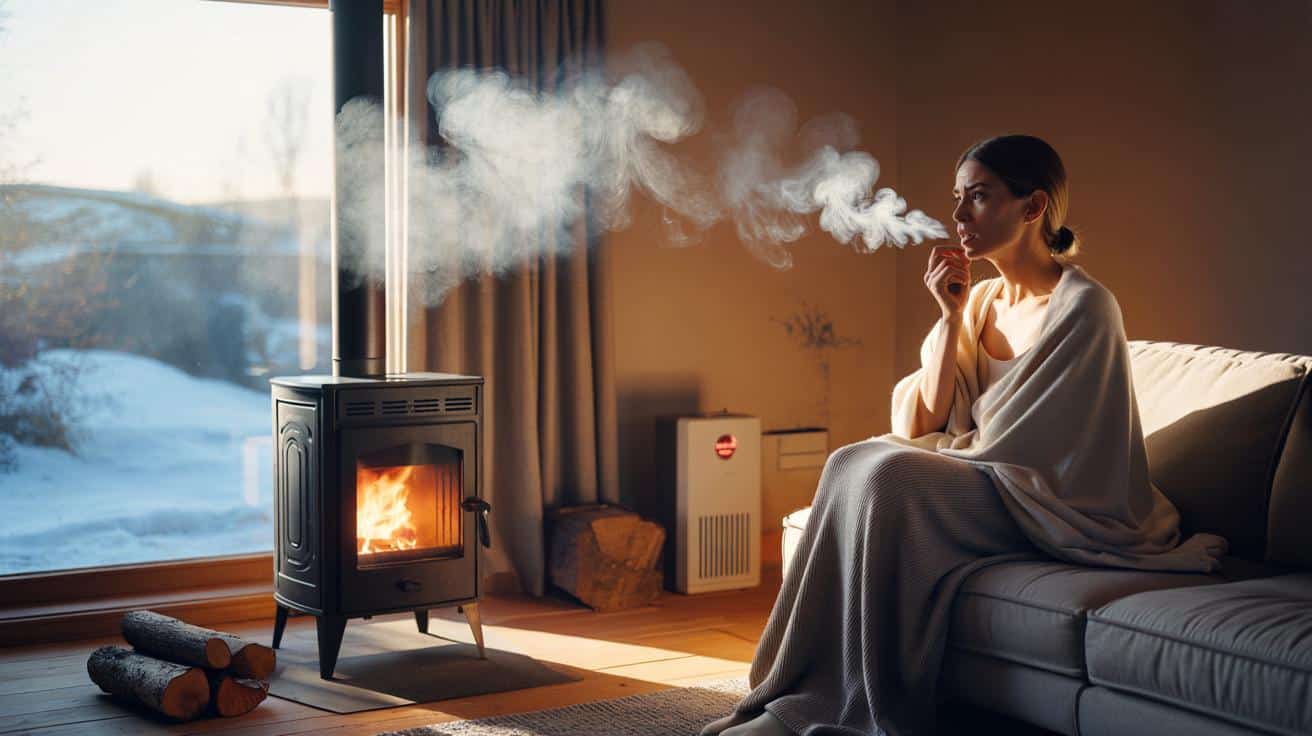Fresh evidence now puts domestic wood burning under a harsher light. A major US cohort tracking tens of thousands of women links routine use of stoves and open fires to a marked rise in lung cancer risk. The findings arrive as households revive hearths for comfort and savings, while public health agencies warn about fine particles and toxic gases that linger indoors long after the embers fade.
Women and wood smoke: what the new data say
Researchers behind the Sister Study examined heating habits, appliance types and frequency of use among around 50,000 women. They followed participants over time and compared cancer outcomes with reported exposure to wood-burning at home. The signal stood out. Women who regularly used a wood stove or fireplace showed a 43% higher likelihood of developing lung cancer than those who did not.
Regular wood-burning at home was linked to a 43% higher risk of lung cancer in women tracked by the study.
Frequency changed the picture again. Once use rose above 30 days in a year, risk climbed to roughly 68% higher. Occasional fires did not look harmless either. The smoke’s fine particles and volatile compounds can persist indoors, build up across cold spells and add to everyday exposures from cooking or traffic pollution that drifts inside.
Lighting a fire on more than 30 days a year correlated with about a 68% higher risk, according to the analysis.
The journal Environment International published the work, which adds to concerns already raised by public health agencies in Europe. In France, residential wood burning represents a large share of fine particle emissions, and officials link air pollution to tens of thousands of deaths every year. The home becomes a key exposure setting during winter.
Why the burden falls harder on women
The researchers propose several plausible reasons for the stronger association in women. Many women spend more time at home around peak heating hours, especially in households with children or caring duties. That reality can raise cumulative exposure in living rooms and kitchens where stoves sit.
Anatomy may also play a role. Women generally have smaller airways than men, which can heighten the dose of pollutants reaching vulnerable lung tissue for a given concentration. Past studies often underestimated domestic exposure in women by focusing on occupational or urban outdoor pollution, which blurred this picture.
The chemistry inside your living room
Wood smoke contains fine particles called PM2.5 that penetrate deep into the lungs. It also carries carcinogens such as polycyclic aromatic hydrocarbons, benzene and 1,3‑butadiene. These compounds can adhere to surfaces and re‑enter the air when rooms warm up or when you disturb soft furnishings.
Open fires emit more smoke into the room than modern sealed stoves, and poorly seasoned logs produce extra soot and toxic gases. Even efficient appliances still vent during refuelling and when the door opens. Draughts, blocked flues and smouldering fires make matters worse.
Practical ways to cut your risk this winter
- Ventilate twice a day for about 10 minutes, including one airing just after the fire goes out.
- Burn only dry, untreated wood with moisture below roughly 20%; store logs under cover for at least a year.
- Keep fires hot and bright rather than smouldering; avoid damping down overnight.
- Service and sweep chimneys or flues at least once per heating season; keep the appliance seals tight.
- Choose a certified low‑emission stove when replacing old units; avoid open fireplaces for regular heating.
- Never burn waste, painted timber or glossy paper; these release extra toxic compounds.
- Limit the number of fire days and combine with other heating where possible.
- Fit a carbon monoxide alarm and place a fine‑particle monitor if you can track indoor air trends.
Fuel quality, hot clean burns and brief cross‑ventilation cut indoor smoke fastest while keeping rooms comfortable.
How common heating choices compare
| Heating option | Likely indoor smoke impact | Notes |
|---|---|---|
| Open fireplace (logs) | High | Significant smoke escapes into room; strong particle spikes during lighting and refuelling. |
| Older log stove (non‑sealed) | Medium to high | Leaky doors and poor draft raise emissions; maintenance makes a difference. |
| Modern certified log stove | Lower, not zero | Cleaner combustion reduces particles; still emits during door opening and start‑up. |
| Pellet stove | Lower | Automated feed supports steady burns; needs good maintenance and proper venting. |
| Electric heat pump/radiators | None from combustion | No indoor combustion; efficiency depends on installation and home insulation. |
| Vented gas boiler | Low for indoor PM | Combustion stays in flue if sealed; carbon monoxide risk if poorly maintained. |
France’s numbers, and what they signal for households
France counts roughly seven million homes using wood. National figures attribute a large share of fine particle emissions to residential wood burning, with air pollution associated with about 40,000 deaths annually. That backdrop helps explain why a single household’s choices matter. Winter inversions trap smoke at street level. Living rooms become the front line for exposure, especially for children, older adults, and people with asthma or chronic bronchitis.
Families weighing change do not need to give up the hearth entirely. Grants and rebates exist in France to replace older, high‑emission appliances with cleaner units such as pellet stoves or heat pumps. Local rules in some European cities also restrict open fires or specify approved stoves during pollution alerts. Your installer can confirm whether your area sets extra requirements before you upgrade.
A quick self‑check before your next fire
- How many days did you burn last month, and can you halve that during milder spells?
- Do your logs read below 20% on a moisture meter, and are they stored off the ground?
- When did you last have a professional sweep and a door‑seal check?
- Does your stove meet a recognised low‑emission standard, and is the flue height adequate?
- Do you have a working carbon monoxide alarm near sleeping areas?
Beyond the stove: cumulative exposures that add up
Risk does not come from one source alone. Candles, incense and poorly vented cooking raise indoor particles on the same days you light a fire. Traffic fumes seep in near busy roads and mix with wood smoke. Tobacco smoke multiplies the harm; household members of smokers face extra risk when the hearth burns. Lower each source and the combined burden falls.
Relative risk figures can sound abstract. They still point to a direction of travel you can control. Use the fire less often. Keep burns clean and hot. Vent the space in short, sharp bursts. Choose dry fuel and a well‑maintained, sealed appliance. Consider a switch to pellets or a non‑combustion heater when budgets and grants allow. These steps cut exposure for everyone at home, with particular gains for women who spend more hours near the stove’s plume.
If someone in your household lives with asthma, COPD, cardiovascular disease or pregnancy, plan for stricter controls. Monitor symptoms on burn days. Keep a rescue inhaler handy if prescribed. Schedule maintenance before the coldest weeks. Small, practical habits shift the daily dose of pollution and move the risk needle in the right direction.








